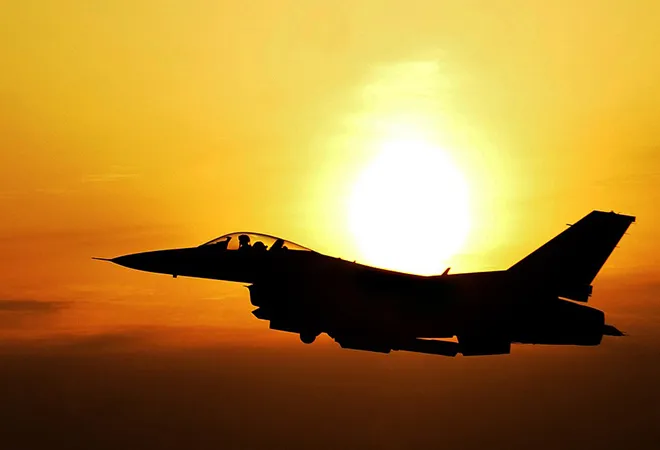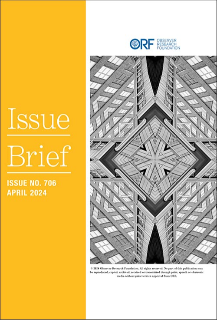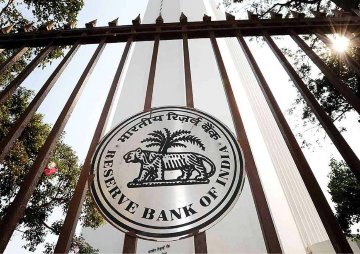 This is the 85th article in the series
This is the 85th article in the series The China Chronicles.
Read the articles here.
As China innovates a new generation of aerial platforms and weaponry in its quest to catch up with the US Air Force, it is clear that the IAF and Indian defence-industrial planning will have to set their sights far more ambitiously than they have thus far. Parity, or even superiority, relative to Pakistan is irrelevant with an ever-evolving PLA Air Force at the continental doorstep.
Since its peak in terms of aircraft numbers in the early 1970s, the People's Liberation Army Air Force (PLAAF) has prioritised modest, incremental modernisation over outright expansion. Rapprochement with the US and the Western world, brought new exposure to western technology and doctrine, and China was moving toward greater industrial and technical co-operation with the West until the Tiananmen Square massacres led to another freeze in relations. Nonetheless, the PLAAF had a great appreciation for what it had already learned, and the US-led air campaign during the 1991 the Gulf War provided the remaining impetus for the long-term transformation of Chinese air power that continues to this day.
The H-6K has a combat radius of around 2,500 km, nearly 40% greater than the preceding H-6H/M variants, which coupled with its KD-20 (CJ-10) cruise missiles, allow it to strike targets 4,000 km from any launch base.
The early 1990s saw the induction of the PLAAF’s first Su-27 ‘Flankers’ and the commencement of a gradual down-sizing in favour of fewer yet more capable aircraft. Parallel to relatively cheap imports from the fledgling Russian Federation, the PLAAF embarked on a comprehensive domestic production and development strategy, resulting in dozens of ever improving
Flanker-family variants, as well as the fourth-generation J-10 and FC-1 (JF-17) multirole fighters — the latter a low cost fighter currently
equipping Pakistan Air Force units in rapidly increasing numbers.
Perhaps most crucially, the PLAAF has continually upgraded its H-6 bomber fleet. Originally based on the venerable 1950s Tu-16 ‘Badger’ produced under licence from the Soviet Union, this platform is the PLAAF’s most potent long-range strike asset today. The
most recent H-6K variant, revealed as recently as 2006, has been virtually redesigned, with new engines, a heavily modified airframe, and completely modern avionics. The H-6K has a combat radius of around 2,500 km, nearly 40% greater than the preceding H-6H/M variants, which coupled with its KD-20 (CJ-10) cruise missiles, allow it to strike targets 4,000 km
from any launch base. The basic H-6 airframe also serves as a cheap and effective aerial tanker to extend the range and endurance of indigenous refueling-capable tactical aircraft.
Recent years have also revealed a fresh focus on better airborne weapons, with a particular emphasis on superior technology, extended range, and reliability — all seen as essential to successful conventional deterrence or prosecution of war in the region.
Aided by an economy that was booming by the late-1990s, the PLAAF has also invested heavily in support aircraft — force multipliers such as Airborne Eearly Warning and Control (AEW&C) types, dedicated Electronic Intelligence/Electronic Warfare (ELINT/EW) aircraft, and tankers. By the early 2000s, the People’s Republic was also able to fund modern testbed aircraft to accelerate local R&D, including an Il-76 airlifter for aero engine testing and a
radar/avionics testbed based on the Russian Tu-204 airliner.
Recent years have also revealed a fresh focus on better airborne weapons, with a particular emphasis on superior technology, extended range, and reliability — all seen as essential to successful conventional deterrence or prosecution of war in the region. In the counter-air domain, the PLAAF is deploying short range PL-10 air-to-air missiles (AAMs) equipped with imaging infrared seekers for close combat, while active radar beyond-visual-range missiles (BVRAAMs) such as the
PL-15 rival the best of the West for range and discrimination. More important to the PLAAF’s new focus on standing toe-to-toe with the USAF and USN are its precision strike weapons — like India, China was late to adopt precision guided munitions (PGMs), but has invested heavily in this capability since the late 1990s. Apart from the usual Russian-sourced missiles such as the Kh-29, Kh-31 and Kh-59, and KAB-series TV-guided bombs, the PLAAF operates a large number of domestically developed or reverse-engineered PGMs. In addition, laser-guided bombs (LGBs) roughly analogous to the PaveWay III (with proportional guidance) have been fielded. While stand-off land attack missiles of 100-200 km range such as the YJ-91 and KD-88 equip a number of tactical aircraft, including the indigenous J-10 and various Flanker family variants. Finally, the KD-20 air-launched cruise missile (ALCM), which entered service with the H-6 in 2016, is a 1,500 km range missile
that is presently unmatched in the region.
New developments
The most visible and relevant of the recent developments in the PLAAF are its J-20 and J-31 low-observable (‘stealth’) fighters and Y-20 strategic transport. The latter is the first true strategic transport available to the PLAAF,
sitting roughly between the Soviet/Russian Il-76 and the US C-17 in terms of capability. Powered by legacy Russian D-30 turbofans like most Il-76s, the Y-20 can lift more payload and haul it farther than its Russian counterpart, albeit falling short of the C-17’s payload-range figures. Nonetheless, it possesses a significant advantage over the Il-76 that puts it firmly in the class of the C-17 — it can airlift the PLA’s primary battle tank, the 58-tonne Type 99 without any dismantling or weight reduction, something that is not possible with the Il-76 and T-90 MBT combination. Once a planned upgrade to more efficient turbofans is implemented on the Y-20, it will close the gap further to the C-17. With a dozen aircraft already in service, the PLAAF’s strategic airlift force is second only to the Indian Air Force’s fleet of eleven C-17s, and with more aircraft and upgrades in the pipeline, will inevitably overtake the IAF in short order.
Equally important, the traditional technological gap to US-supported Japan and South Korea has also narrowed — all three nations now operate some form of fifth-generation fighter.
On the fighter front, China is running two
ostensibly fifth-generation fighter programmes, the only country other than the USA to do so. While the efficacy of the J-20 and J-31 themselves might be up for debate, what is not is the relevance of sensor-focused, highly networked, stealthy tactical aircraft in the future battlespace. If the J-31’s future is uncertain, its elder sibling’ is emphatically not.
The first J-20s have already entered service with an operational PLAAF unit in the Eastern Theatre Command, after spending some three years with frontline testing and training units. Even as the PLAAF takes delivery of Russian Su-35s, this marks the first time the Chinese have inducted a combat aircraft one generation ahead of their northern neighbour. Equally important, the traditional technological gap to US-supported Japan and South Korea has also narrowed — all three nations now operate some form of fifth-generation fighter. Early induction of the J-20 also gives China time to assess and rectify shortcomings in time to dovetail with production changes required for planned modifications such as the indigenous WS-15 supercruising engines.
Facing India
Directly arrayed against India is the PLA’s Western Theatre Command (WTC), which faces aircraft of the IAF’s Eastern Air Command (EAC), Central Air Command (CAC), and Western Air Command (WAC). At first glance, the PLAAF in the WTC appears lightly resourced compared to the other Commands, comprising some 200 legacy fighters (J-7, JH-7 and J-8 variants) centred on a small nucleus of roughly hundred higher-end Flanker variants. This does not account for the PLAAF’s ability to rapidly augment the WTC with high-end fighters (including fifth-generation J-20s) from neighbouring Commands, as well as bring force multipliers such as tankers, AEW&C aircraft, and ELINT/EW aircraft to bear on Indian forces in short order. A wide range of PLAAF assets, including many that are not formally assigned to the WTC
routinely conduct extensive exercises on the Tibetan Plateau.
Meanwhile, the IAF’s force structure woes are well documented, but what is less apparent is that the bulk of the IAF’s retirements in the past twenty-odd years have disproportionately affected forces in the east, while new inductions have gone west, doing nothing to balance the scales.
The WTC notably lacks a permanent fighter presence on the Tibetan Plateau, and when operating from forward bases there,
suffers the worst effects of weather and altitude that the IAF does not, with its lower-altitude bases in, for example, places like Hasimara. The PLAAF has taken steps to mitigate these issues, however, and the incredibly long runways
at Xigaze and
Lhasa allow tactical aircraft to operate from these fields without any apparent restrictions, and
even enable UAV and bomber operations, albeit with unknown restrictions on operating limits. WTC multirole aircraft, most of which are Flanker derivatives, operating from Xigaze and equipped with standoff weapons, can comfortably hold at risk a swath of Indian territory from the state of Uttarakhand to West Bengal — to say nothing of bombers that could be rotated in during confrontations.
Meanwhile,
the IAF’s force structure woes are well documented, but what is less apparent is that the bulk of the IAF’s retirements in the past twenty-odd years have disproportionately affected forces in the east, while new inductions have gone west, doing nothing to balance the scales. The situation will not be remedied before 2020-21, when the second squadron of Rafale fighters enters service at Hashimara in West Bengal, clawing back some lost ground with the long-range Meteor AAM and stand-off SCALP ALCM. BrahMos-carrying Su-30MKIs will level the scales further, but EAC units will continue to be outnumbered on a per-aircraft basis. Even accounting for the assets that CAC and WAC could make available to face possible Chinese air action — they would have to hold some in reserve to maintain a defensive posture against Pakistan — the WTC alone is a formidable force. After allowing for Chinese augmentation from other Commands, however, the balance tilts decisively in the PLAAF’s favour.
As India and Pakistan continue their seven-month face off, the strategic establishment may be forgiven for overlooking China.
To make matters worse, none of this accounts for the inevitable induction of the J-20 in the WTC, even as the IAF’s slow decline continues. Although the IAF says it can detect Chinese stealth aircraft using low-frequency high-power ground radars, there is no clarity on whether detected aircraft can be tracked and prosecuted by either air-launched or ground-launched weapons. There is also no evidence yet of a
cooperative engagement, capability that could take advantage of this sort of distributed situational awareness. Furthermore, high-power ground radars are themselves vulnerable to hostile anti-radar sensors and weapons when they emit radar waves, making mere detection of enemy aircraft, particularly stealth aircraft that cannot be quickly and reliably engaged a short-lived victory.
Understand and adopt air power
As India and Pakistan continue their seven-month face off, the strategic establishment may be forgiven for overlooking China. Yet as the China-Pakistan, relationship grows closer,
whether by design or by default, Indian defence planners seem to remain blind to the accretion of military capability in China, choosing instead to benchmark against the lower-hanging fruit that is Pakistan’s relatively smaller force. In particular, while China’s aerospace capabilities, both ashore and at sea, continue to receive disproportionate focus,
driven from the very top as part of Xi Jinping’s sweeping 2015 PLA reforms, India is still predominantly focused on land forces. Indeed, the section on ‘Reform in China’s National Defense and Armed Forces’ in the 2019 Defence White Paper,
makes pointed reference to significant downsizing of the Army in favour of the PLAAF, PLAN and PLARF.
Unlike other major powers that have moved rapidly toward an air-centric military posture, recognising the outsize impact and flexibility of the aerial domain in military actions over the past 50 years, Indian military thought remains landlocked. No amount of doctrinal evolution and incremental capability enhancement within the IAF will have any meaning unless the civilian and military leadership in New Delhi also understands this reality and re-orient accordingly.
The author would like to acknowledge Andreas Rupprecht, author of ‘Modern Chinese Warplanes’ (Harpia Publishing, 2018)
The views expressed above belong to the author(s). ORF research and analyses now available on Telegram! Click here to access our curated content — blogs, longforms and interviews.



 This is the 85th article in the series The China Chronicles.
Read the articles
This is the 85th article in the series The China Chronicles.
Read the articles  PREV
PREV


